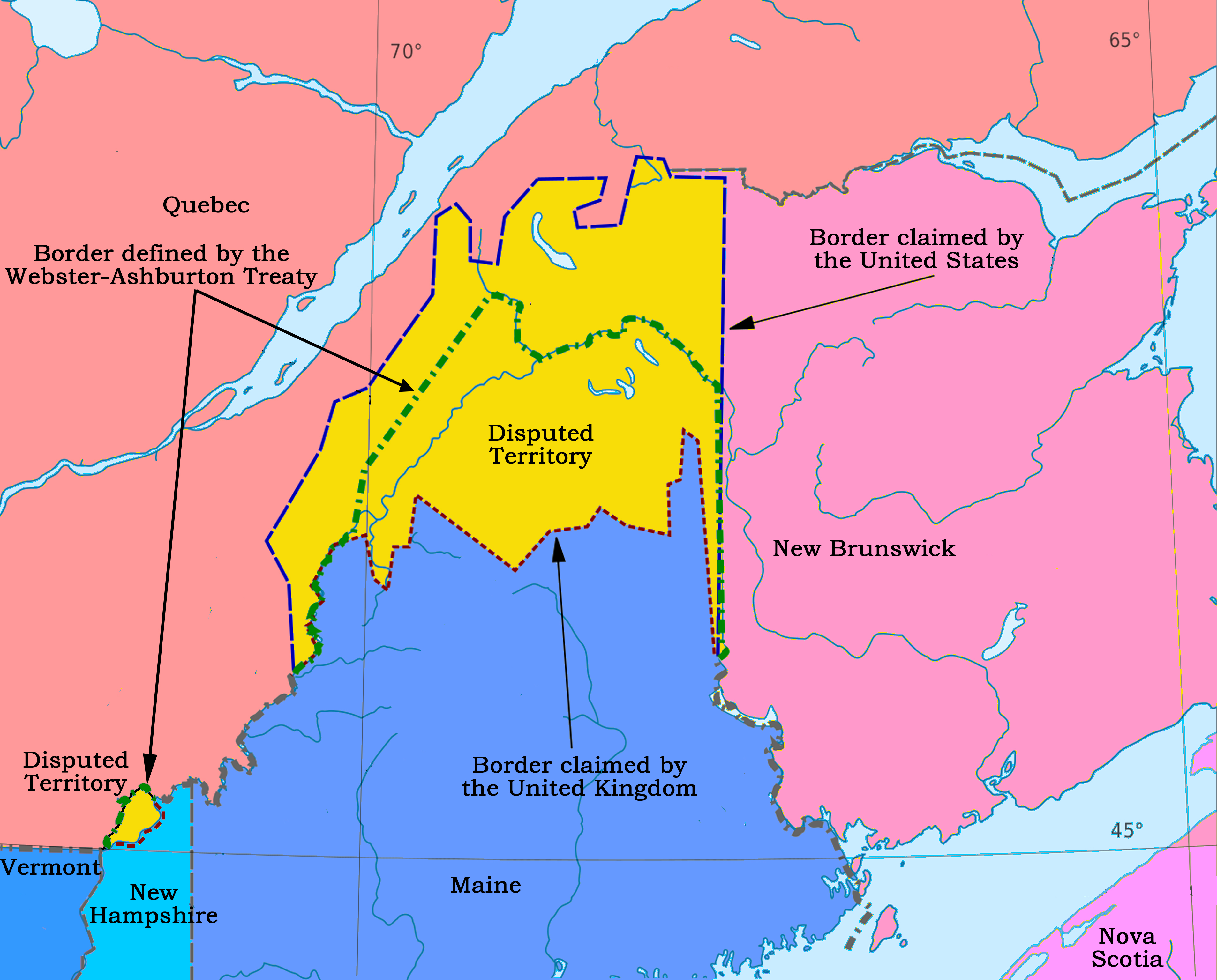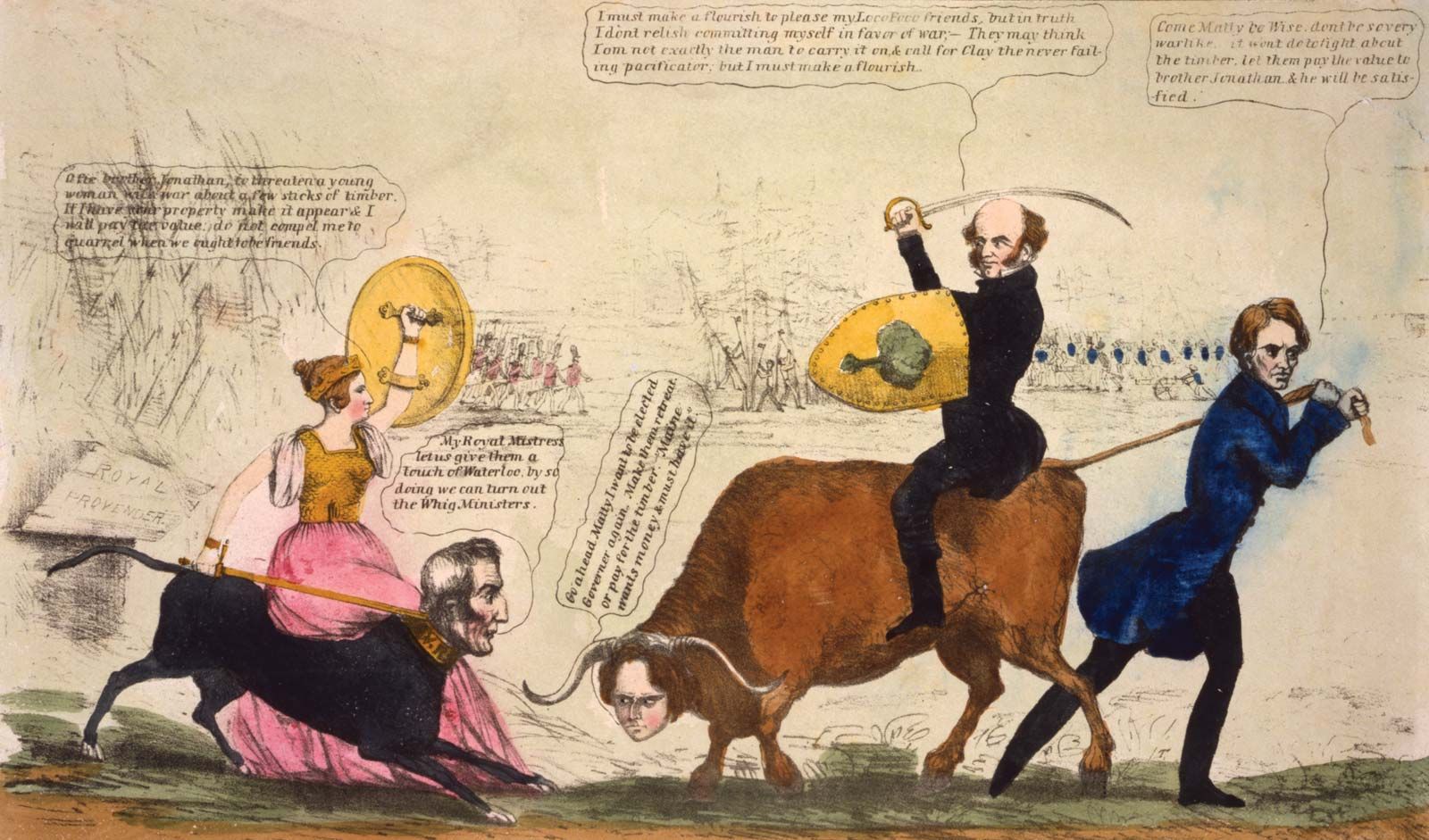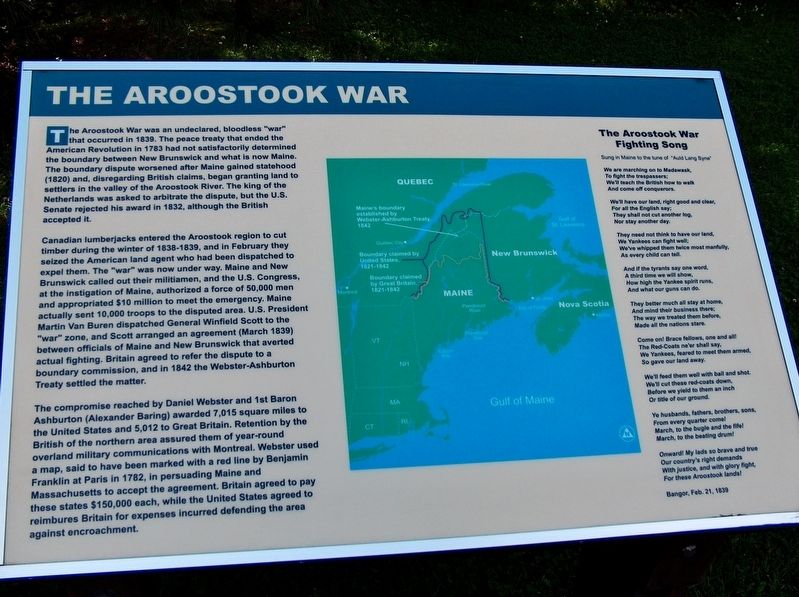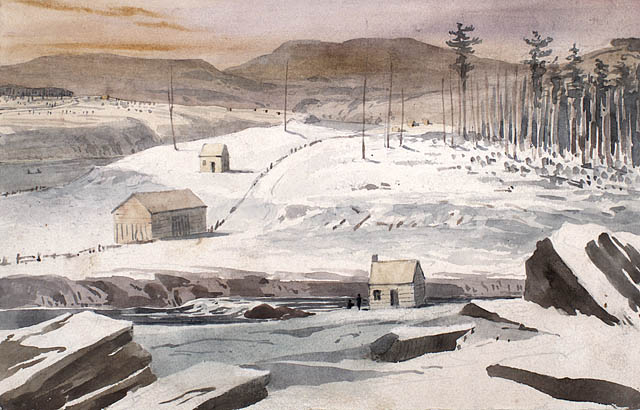In the annals of North American history, few border disputes have been as peculiar as the Aroostook War, a confrontation that managed to raise tensions between the United States and British North America without spilling a single drop of blood. This unusual conflict, which unfolded in 1838-1839, centered around the heavily forested region between Maine and New Brunswick.

Map showing the disputed territory between Maine and New Brunswick. Credit: Wikimedia Commons
The roots of this dispute traced back to the ambiguous boundary definitions in the Treaty of Paris of 1783, which ended the American Revolution. Both sides claimed the valuable timber-rich territory along the Aroostook River, leading to increasing friction as logging operations expanded in the region.

Political cartoon depicting the escalating tensions during the Aroostook War. Credit: Britannica
As winter descended in 1838, reports of New Brunswick lumberjacks harvesting timber in the disputed territory reached Maine officials. The state’s response was swift and decisive. Maine land agent Rufus McIntire led a posse into the contested area, only to find himself captured by New Brunswick authorities. This incident sparked a chain reaction that would draw both nations to the brink of armed conflict.

Historical marker commemorating the Aroostook War. Credit: Historical Marker Database
The situation escalated when Maine’s legislature authorized $800,000 for military defense and called up the militia. Congress, responding to the crisis, passed legislation permitting President Martin Van Buren to raise a 50,000-man army and allocated $10 million for war preparations. British troops moved into New Brunswick, while American forces constructed forts along the disputed frontier.

Overview of the disputed territory during the Aroostook War. Credit: The Canadian Encyclopedia
The resolution came through diplomacy rather than combat. The Webster-Ashburton Treaty of 1842, negotiated by U.S. Secretary of State Daniel Webster and British diplomat Lord Ashburton, finally settled the boundary dispute. The agreement gave approximately 7,015 square miles to the United States and 5,012 square miles to British North America, establishing the border that exists today between Maine and New Brunswick.
The Aroostook War stands as a testament to the power of diplomatic solutions and the sometimes peculiar nature of territorial disputes. While it may have lacked the dramatic battles of other conflicts, its peaceful resolution helped establish a precedent for border negotiations between the United States and British North America.
References:
Aroostook War – Encyclopedia Britannica – link
The Canadian Encyclopedia – Aroostook War – link
Categories: American History, Border Disputes, Canadian History, Diplomatic History, Military History, War History
Tags: 19th Century Conflict, Aroostook War, Border Dispute, Diplomatic History, Maine History, New Brunswick, Webster-Ashburton Treaty
Religion: Not applicable
Country of Origin: Canada, United States
Topic: Military History
Ethnicity: Not Applicable

